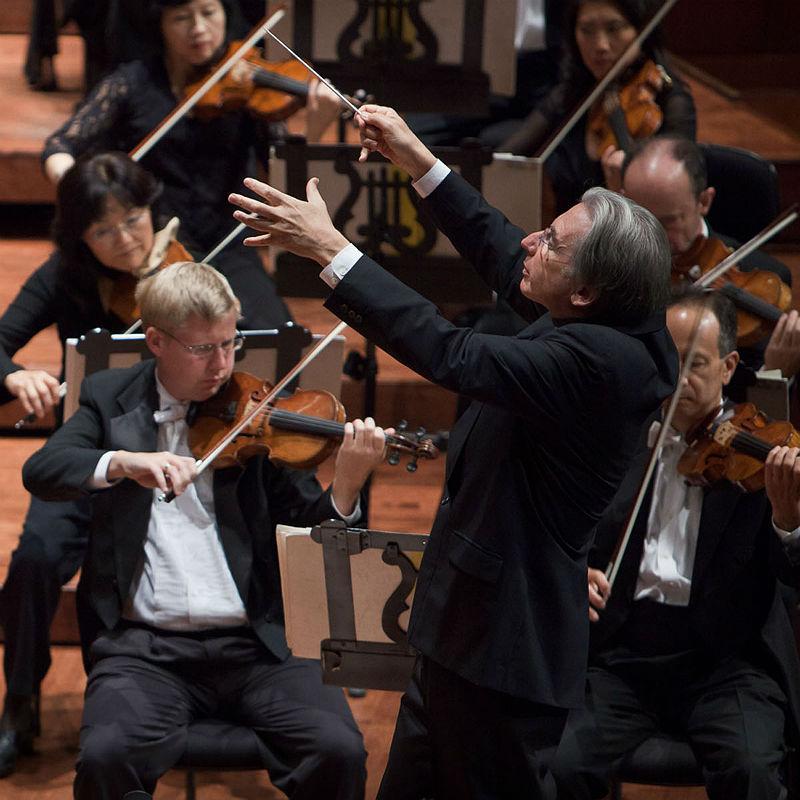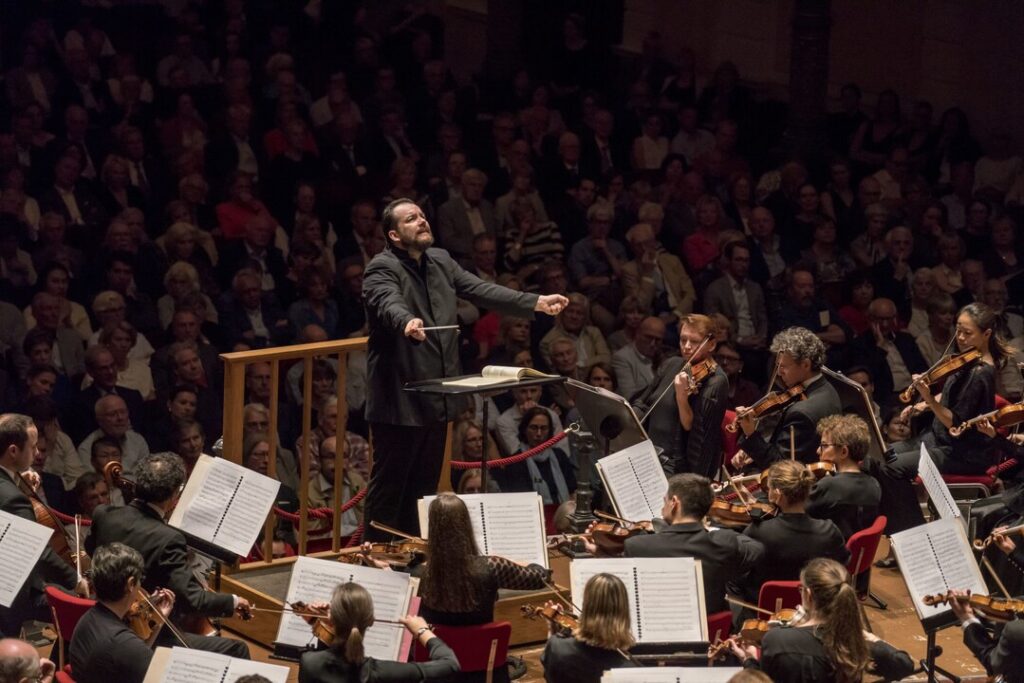An orchestra conductor stands as the pivotal figure in the world of symphonic music, embodying the role of both a guide and a visionary. This individual is responsible for interpreting the musical score, a task that requires an intimate understanding of the composer’s intentions and the historical context of the piece. The conductor sets the tempo, ensuring that the performance adheres to a coherent rhythmic structure, which is crucial for the synchrony of the ensemble. Beyond these technical aspects, the conductor also plays a vital role in shaping the orchestra’s overall sound, bringing out the nuances of the music, and highlighting the emotional depth of the composition. Their responsibilities extend into administrative realms as well, often involving the selection of pieces for the concert repertoire and collaborating with soloists, composers, and other stakeholders in the musical community. The role demands not just a deep understanding of music theory and history but also strong leadership qualities, exceptional communication skills, and the ability to make quick, decisive judgments during performances.
A Brief History of Orchestral Conducting
Orchestral conducting, as a recognized and specialized skill, has a rich history that dates back several centuries. In the early stages of orchestral music, the role of the conductor was often fulfilled by a leading musician within the ensemble, such as the concertmaster or the principal violinist. This approach was practical for smaller ensembles but became increasingly inadequate as orchestras expanded in size and the music grew more complex. The 19th century marked a significant turning point, with the emergence of the conductor as a distinct and central figure in orchestral performances. Iconic composers like Richard Wagner and Johannes Brahms were instrumental in this transformation, elevating the conductor’s role from a mere timekeeper to that of an artistic director. This period also saw the development of specific conducting techniques and the use of the baton, which became symbols of the conductor’s authority and artistic identity. The evolution of conducting continued into the 20th century, with maestros like Arturo Toscanini, Leonard Bernstein, and Herbert von Karajan, each bringing their unique styles and interpretations to the podium. These developments reflected broader changes in the musical world, including shifts in the composition styles, the size and composition of orchestras, and the societal role of orchestral music.
The Conductor’s Toolbox: Techniques and Skills
The effective orchestral conductor wields a diverse set of skills and techniques, essential for crafting and delivering compelling musical performances. One of the most visible aspects of conducting is the use of the baton, a tool that extends the conductor’s gestures, enhancing clarity and precision in communicating with the orchestra. Baton techniques vary widely and can include a range of motions to indicate tempo, dynamics, phrasing, and articulation. Beyond baton work, a conductor’s physicality plays a significant role, gestures, facial expressions, and body language are all employed to convey musical ideas and emotions, bridging the gap between the score and the musicians. Another critical aspect of conducting is score reading and analysis. A conductor must be adept at interpreting complex musical scores, understanding the intricacies of harmony, rhythm, and orchestration. This analytical work forms the foundation for the conductor’s interpretation, informing decisions about tempo, dynamics, and phrasing. Additionally, a conductor needs to have a deep understanding of different musical styles and periods, from Baroque to contemporary, tailoring their approach to suit the specific demands of each piece. Effective rehearsal techniques are also a crucial part of the conductor’s skill set. Conductors must be able to communicate their vision clearly, work collaboratively with musicians, and make efficient use of rehearsal time. This often involves giving precise feedback, fostering a productive and positive rehearsal environment, and addressing any technical or musical issues that arise.

The Psychology of Leading an Orchestra
Orchestral conducting transcends the realms of musical expertise, delving into the psychology of leadership and group dynamics. A conductor must be adept at understanding and managing the diverse personalities within the orchestra, each musician bringing their unique temperament, skills, and expectations to the ensemble. The conductor’s ability to inspire and motivate is paramount, as it directly influences the quality of the performance. This requires a delicate balance of authority and empathy, fostering an environment of mutual respect and collaboration. The psychological aspects of conducting also extend to the conductor’s self-management. The role is often associated with high levels of stress and pressure, arising from the immense responsibility of leading a group of highly skilled professionals and the expectations of audiences and critics. A successful conductor must therefore possess not only musical and technical prowess but also emotional intelligence, resilience, and the capacity to maintain focus and composure under pressure. The psychological interplay between the conductor and the orchestra is a critical factor in achieving a unified and expressive performance, where the sum becomes greater than its individual parts.
Famous Conductors and Their Impact on Music
Throughout the history of orchestral music, certain conductors have risen to prominence, leaving an indelible mark on the art form. These maestros are celebrated not only for their musical expertise but also for their unique approaches to conducting and their contributions to the evolution of the field. Leonard Bernstein, for example, was known for his dynamic conducting style, educational endeavors, and efforts to make classical music accessible to a wider audience. His charismatic leadership and passionate interpretations brought a new level of excitement and relevance to orchestral music. Arturo Toscanini, revered for his intense and meticulous approach, set new standards for orchestral performance, emphasizing precision, discipline, and fidelity to the composer’s intentions. Herbert von Karajan, another towering figure, was noted for his attention to detail and innovative use of recording technology, which greatly influenced the way orchestral music is produced and consumed. These conductors, among others, have significantly shaped the course of musical history, each bringing their unique vision and style to the podium. Their interpretations and recordings continue to influence both musicians and audiences, shaping perceptions of classical music and inspiring future generations of conductors and performers.

Preparing for a Performance: Behind the Scenes
The journey to a captivating orchestral performance involves a series of intricate and carefully orchestrated steps, largely led by the conductor. Preparation begins long before the musicians assemble, with the conductor dedicating considerable time to studying the score. This process involves delving into the nuances of the music, understanding the composer’s intentions, and developing a personal interpretation. The conductor must consider various elements such as tempo, phrasing, dynamics, and orchestration, envisioning how each will contribute to the overall performance. Rehearsals are the next critical phase, where the conductor’s vision starts to take shape. These sessions are much more than mere practice; they are opportunities for the conductor to communicate their interpretation to the musicians, refine the ensemble’s sound, and address any technical challenges. The conductor must skillfully balance the need to focus on details with maintaining the flow and energy of the piece. Collaboration is also a key aspect of the preparatory phase. Conductors often work closely with soloists, guest artists, and composers, ensuring that all elements of the performance align seamlessly. This behind-the-scenes work is essential for creating a performance that resonates with both the musicians and the audience, transforming the written notes into a living, breathing piece of art.